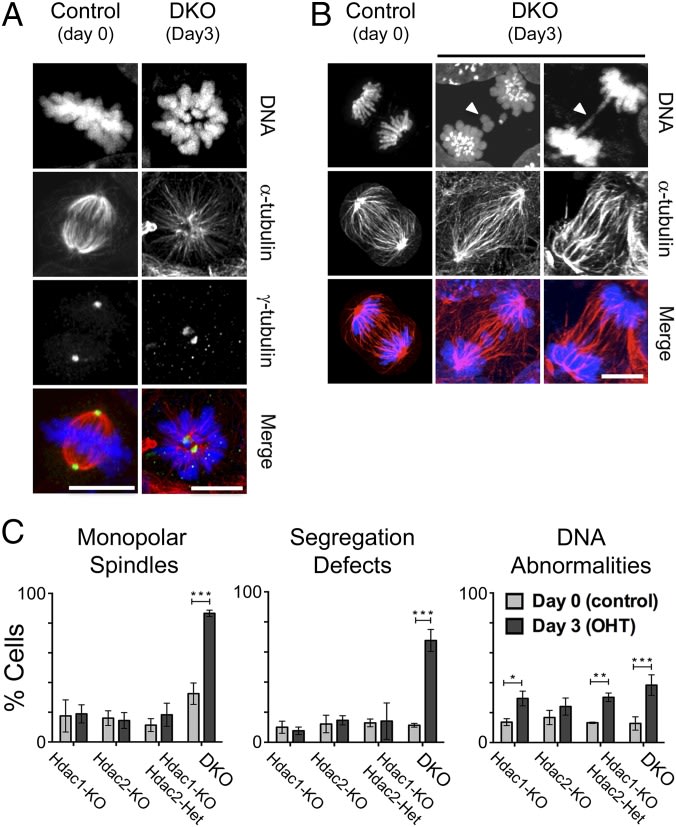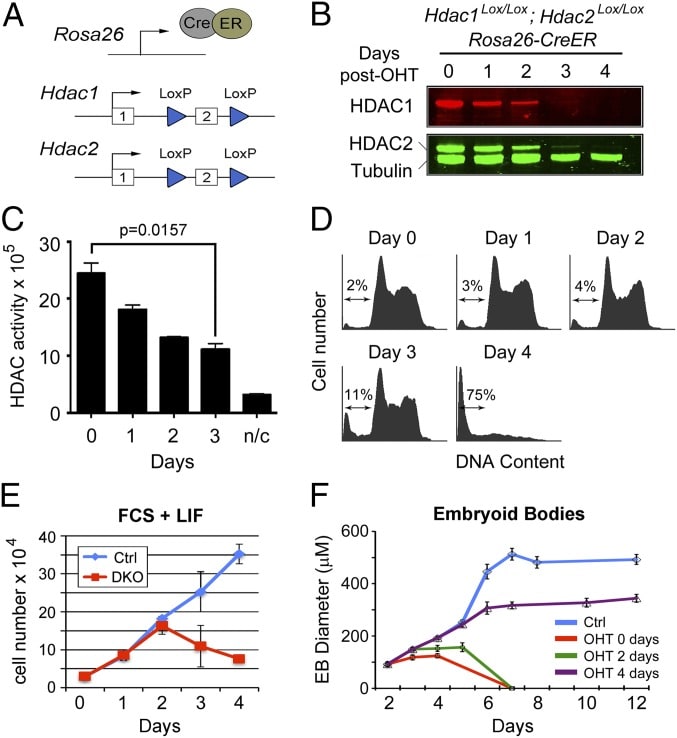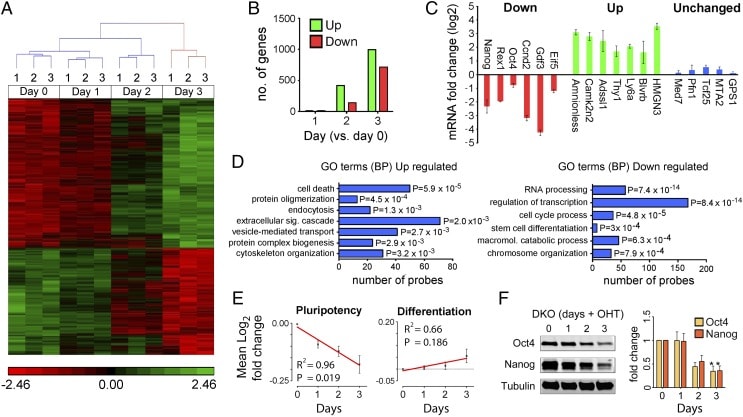|
Catalogue Number
|
158385 |
|
Antigen/Gene or Protein Targets
|
Histone deacetylase 1/2
|
|
Parental Line
|
E14 ES cell line expressing an inducible Cre/Estrogen Receptor (CreER) construct from the endogenous ROSA26 locus
|
|
Synonyms
|
RPD3L1
|
|
Tissue
|
Embryo
|
|
Model
|
Knock-Out
|
|
Relevance
|
Responsible for the deacetylation of lysine residues on the N-terminal part of the core histones (H2A, H2B, H3 and H4). Histone deacetylation gives a tag for epigenetic repression and plays an important role in transcriptional regulation, cell cycle progression and developmental events. Histone deacetylases act via the formation of large multiprotein complexes. Histone deacetylases (HDAC) 1 and 2 are highly similar enzymes that help regulate chromatin structure as the core catalytic components of corepressor complexes. Although tissue-specific deletion of HDAC1 and HDAC2 has demonstrated functional redundancy, germ-line deletion of HDAC1 in the mouse causes early embryonic lethality, whereas HDAC2 does not.
|
|
Production Details
|
E14 ES cells expressing a CreER fusion protein from the ROSA26 locus were used to generate Hdac1Lox/Lox; Hdac2Lox/Lox; CreER conditional knockout ES cells, using multiple rounds of gene targeting
|
|
Conditional
|
Yes
|
|
Conditional Description
|
To induce Hdac1/2 deletion, cells were cultured for 24 h in the presence of OHT (1 μM) to activate the CreER fusion protein.
|
|
Research Area
|
Developmental Biology, Reproductive Biology
|
|
Notes
|
Loss of exon 2 via the conditional KO disrupts the ORF of both HDAC1 and HDAC2 such that a premature stop codon is introduced in exon 3. Following this deletion of exon 2 a further 4–5 days of culture are required before HDAC1 and HDAC2 protein levels are reduced below 10% of those of control cells. HDAC1/2 are necessary for accurate chromosome segregation. Significantly for the maintenance of stem cell self-renewal, we detected a reduction in the expression of the pluripotent transcription factors, Oct4, Nanog, Esrrb, and Rex1.
|












